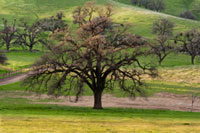How A WWII Morning Report Can Solve A Mystery

WWII Military Research can have challenges for many reasons. Of course, the fire at the National Personnel Records Center (NPRC) may have burned an army ancestor’s file. Unlike WWI records. Not many of the WWII records are online. This means a little more work is required in identifying which records will help and then traveling to the repositories.
We had known that my father was stationed in Greenland as a soldier during WWII, and that he traveled to Greenland by ship. He spoke very little about WWII, but that was some of the very little that he had shared.
His Report of Separation contains the date that he departed the Continental United States, in Box 36.
Date of Departure: 1 Aug 43
Destination: Greenland

Unlike the WWI ship manifests, the WWII ship manifests are not digitized and indexed. That means to use them you have to take a trip to NARA II in College Park, MD. The problem is that these records are stored by ship name, so you need to know the name of the ship to find the manifest. (In contrast, we can search using a soldier’s name to locate the ship manifests without knowing the ship names upon which our WWI ancestors traveled.)
Timelines are one of my favorite tools in genealogy. Of course, I have been busy building a timeline and gathering information in a binder dedicated to researching my father’s WWII experience. Without the ships’ names, there was some missing data in that timeline.
A while ago, I located a great ebook online, “Troopships Of World War II” by Roland W. Charles at https://www.80thdivision.com/pdfs/wwii_Troopships.pdf
Having that timeline, I had explored this book for candidate ships carrying him to and from Greenland. I had identified potential ships and eliminated many.
The one clue that has been taking me places was a single sheet of paper found in my father’s personal belongings. It commemorated his crossing of the Arctic Circle. This certificate included his name, superior officers’ signatures, and the latitude of the Arctic Circle. Being concerned with operational security during wartime, this certificate had a blank line for the ship name as well as for the longitude where they crossed the circle. The day of August in 1943 was also blank. But there was one clue, his military organization: Btry ‘A’ 500 AAA Gun Bn

Morning Reports are a wonderful resource. Several years ago, I brought my research team with me to NARA St. Louis to view and copy the Morning Reports for the 51st Pioneer Infantry Regiment, in which my grandfather served in WWI. The WWI Morning Reports are now online, which makes them very convenient to gather and use. However, the WWII Morning Reports have not been digitized and require a visit or the use of a retrieval service.
Here, at last, was information about my father’s outgoing trip. On 1 August 1943, Battery (Btry) A of the 500th Antiaircraft Artillery (AAA) Battalion (Bn) of the U.S. Army Coast Artillery Corps (CAC) was onboard the SS Yarmouth.

Now, I could learn more about the USAT Yarmouth from Engineer Charles’ book.

These facts also tie in with information about Greenland convoys that are posted here: http://www.warcovers.dk/greenland/geen_main.htm
At this point, it was time to slow down and record the collection of evidence that I had. One of the best ways to understand something is to undertake explaining it to others, so I created a document to share with my brother. This document contains the facts I know, so that they can be summarized in a research plan.
We remembered mentions of the outgoing convoy, and now I can investigate them. I will contact NARA to see if I can arrange to view the Yarmouth’s manifests, and perhaps consider looking at the deck logs. Both should be located at College Park, MD.



